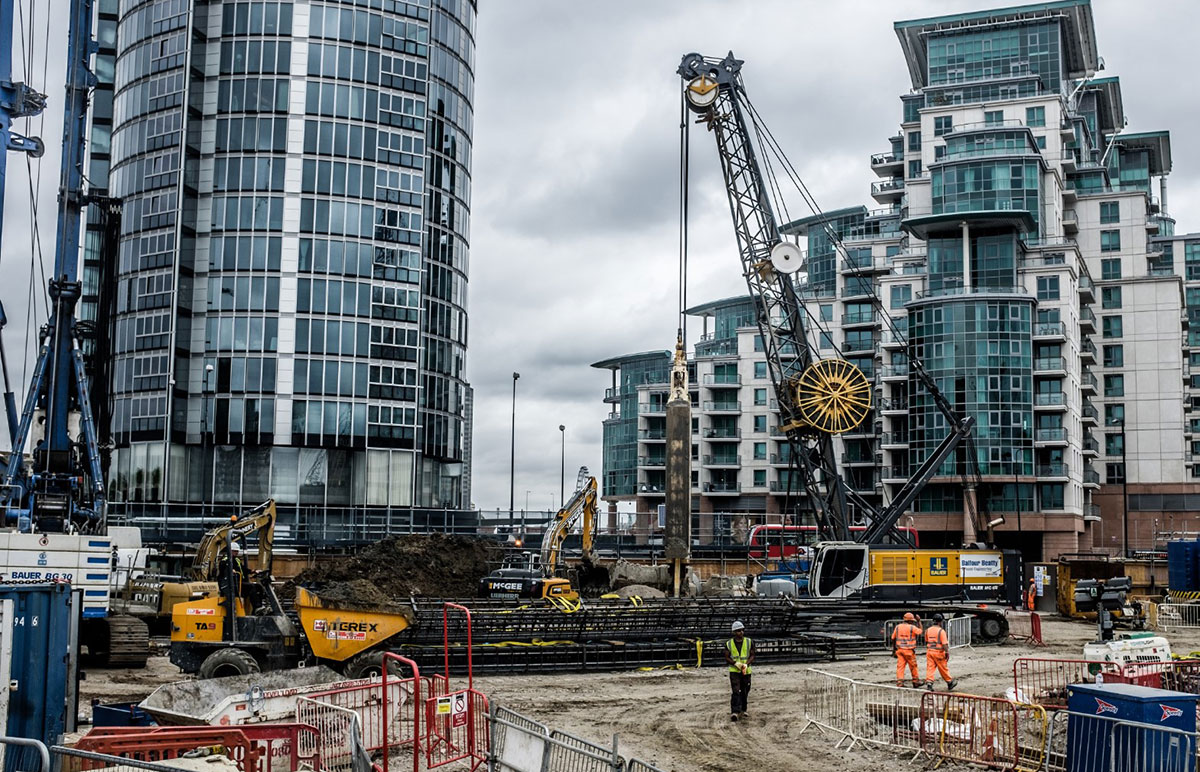The Geotheta Statements
Wiki Article
The Definitive Guide for Geotheta
Table of ContentsLittle Known Questions About Geotheta.Facts About Geotheta RevealedNot known Facts About GeothetaGeotheta Things To Know Before You BuyThe Only Guide for Geotheta

They carry out website investigations, gather examples, execute lab examinations, and assess data to examine the viability of the ground for building jobs - Consulting Engineers. Based on their findings, geotechnical designers provide suggestions for structure layout, slope stability, preserving structures, and mitigation of geotechnical dangers. They team up with various other specialists, such as engineers, architectural engineers, and building and construction teams, to make sure that geotechnical considerations are integrated into the general job layout and execution
By assessing the behavior and homes of soil and rock, they can identify prospective geotechnical risks such as landslides, soil negotiation, or slope instability. Their competence aids prevent failures or crashes that might threaten lives and property. Below are some thorough duties and obligations of a geotechnical designer: Site Investigation: Geotechnical engineers conduct website examinations to gather data on subsurface problems.
They analyze the data to recognize the properties and behavior of the dirt and rock, including their strength, permeability, compaction attributes, and groundwater conditions. Geotechnical Analysis and Design: Geotechnical designers assess the data gathered during site examinations to assess the stability and viability of the website for building jobs. They execute geotechnical computations and modeling to examine elements such as birthing ability, settlement, incline security, side planet stress, and groundwater flow.
The Definitive Guide to Geotheta
Structure Style: Geotechnical designers play a critical duty in creating structures that can safely sustain the designated framework. They evaluate the dirt problems and load needs to determine the proper foundation type, such as superficial foundations (e.g., grounds), deep structures (e.g (https://www.storeboard.com/geotheta)., piles), or specialized techniques like soil renovation. They consider variables such as negotiation limits, birthing capability, and soil-structure interaction to create ideal structure stylesThey evaluate building plans, monitor site activities, and conduct field inspections to validate that the style recommendations are adhered to. If unexpected geotechnical problems emerge, they assess the scenario and give suggestions for remediation or adjustments to the design. Danger Assessment and Reduction: Geotechnical engineers assess geotechnical dangers and dangers connected with the job website, such as landslides, liquefaction, or dirt erosion.

Cooperation and Communication: Geotechnical designers function carefully with various other specialists included in a project, such as engineers, architectural engineers, and construction teams. Reliable communication and cooperation are important to integrate geotechnical considerations right into the overall task design and building process. Geotechnical designers give technical know-how, solution questions, and make certain that geotechnical demands are met.
Some Known Incorrect Statements About Geotheta
Right here are some kinds of geotechnical designers: Structure Engineer: Structure designers focus on designing and assessing structures for frameworks. They evaluate the soil conditions, load requirements, and website characteristics to figure out the most proper foundation type and design, such as shallow structures, deep More Info foundations, or specialized strategies like stack structures.They examine the elements influencing slope stability, such as soil residential or commercial properties, groundwater conditions, and incline geometry, and establish strategies to prevent slope failures and minimize risks. Quake Designer: Quake designers specialize in evaluating and creating structures to endure seismic forces. They analyze the seismic risk of a site, review dirt liquefaction potential, and establish seismic design standards to guarantee the security and strength of structures throughout earthquakes.
They perform field testing, accumulate samples, and evaluate the collected data to identify the dirt homes, geologic formations, and groundwater problems at a site. Geotechnical Instrumentation Designer: Geotechnical instrumentation designers concentrate on monitoring and gauging the habits of soil, rock, and frameworks. They mount and keep instrumentation systems that keep track of elements such as dirt settlement, groundwater degrees, slope motions, and structural variations to analyze performance and supply very early warnings of possible issues.
Geotheta Can Be Fun For Anyone
They perform tests such as triaxial tests, debt consolidation tests, straight shear examinations, and leaks in the structure examinations to collect information for geotechnical evaluation and design. Geosynthetics Engineer: Geosynthetics designers specialize in the design and application of geosynthetic materials, such as geotextiles, geogrids, and geomembranes. They utilize these materials to boost dirt security, enhance inclines, offer drainage solutions, and control disintegration.They have a tendency to be investigatory individuals, which suggests they're intellectual, introspective, and investigative. They are interested, systematic, rational, logical, and sensible. Some of them are likewise social, indicating they're kind, charitable, cooperative, client, caring, valuable, understanding, sensible, and pleasant. Does this noise like you? Take our free occupation examination to discover if geotechnical designer is one of your leading occupation matches.
In the office setting, geotechnical engineers use specialized software tools to do computations, create styles, and analyze data. They prepare records, review task specifications, connect with clients and staff member, and coordinate project activities. The office setup offers a conducive setting for study, evaluation, and cooperation with various other experts associated with the job.
The Best Guide To Geotheta
They often visit project sites to conduct site investigations, evaluate geotechnical conditions, and collect data for evaluation. These visits entail taking a trip to different places, sometimes in remote or challenging surfaces. Geotechnical engineers might carry out dirt tasting, conduct tests, and screen building and construction activities to make sure that the geotechnical facets of the project are being executed properly.Geotechnical designers likewise operate in specialized geotechnical research laboratories. In these facilities, they perform experiments, perform tests on soil and rock samples, and assess the design residential properties of the materials. Geotechnical research laboratory engineers function extensively in these settings, taking care of testing devices, operating instruments, and tape-recording information. They work together with various other research laboratory team to guarantee precise and reputable testing outcomes.
Report this wiki page